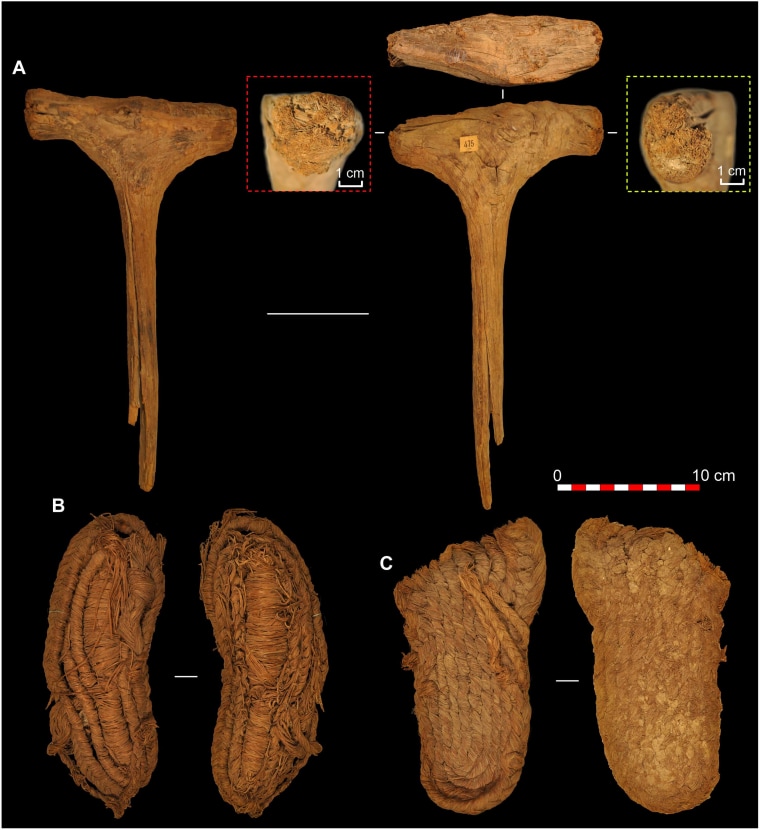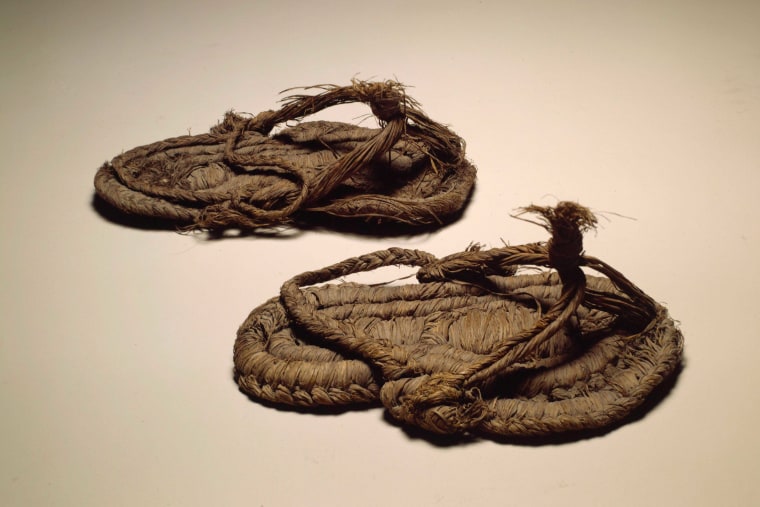Sandals buried in a bat cave in southern Spain may be the oldest footwear ever discovered in Europe, scientists said this week, estimating that they could be up to 6,200 years old.
Baskets, tools and the sandals found in the 19th century at a hunter-gatherer burial site in the Cueva de los Murciélagos, or “cave of the bats,” near the southern city of Granada, are much older than previously thought, a team examining the items said in an article in Science Advances journal on Wednesday.
The study used radiocarbon dating to date 76 items, including baskets and 22 sandals made from esparto, a kind of grass used in crafts across the Iberian Peninsula and North Africa for thousands of years.
The ancient humans crushed the grass to make twine to braid baskets, bags and sandals. The grass had to be dried for 20 to 30 days before it was rehydrated for 24 hours to make it pliable — a complex and skilled process.
Similar sandals found in Armenia are estimated to be 5,500 years old, while the shoes worn by “Ötzi the Iceman” — a prehistoric man found in Italy in 1991 — are dated to 5,300 years ago.
“The quality and technological complexity of the basketry makes us question the simplistic assumptions we have about human communities prior to the arrival of agriculture in southern Europe,” the study's leader, Francisco Martínez Sevilla, said in a news release.
Martínez Sevilla, of Spain’s University of Alcalá, added that the Cueva de los Murciélagos was a “unique site in Europe to study the organic materials of prehistoric populations.”

The sandals have no laces, but some had a single braid fixed to the middle which could be tied around the wearer’s ankle. Similar sandals from later periods found across Europe were made with other materials, not just grass.
“This sandal set therefore represents the earliest and widest-ranging assemblage of prehistoric footwear, both in the Iberian peninsula and in Europe, unparalleled at other latitudes,” the study said.
While some of the sandals showed marks from being worn, others were unused and could have been made for the dead, the study said.
The cave once housed burial goods from a huge swath of early human history, some possibly 9,500 years old.
A team of 20 experts from different disciplines, including geologists and historians, worked on the ongoing project.
The cave’s lack of humidity and its constant cooling wind made the items here the best preserved plant-based tools found in southern Europe. The same conditions have led to a huge number of important archaeological finds in the Middle East, particularly in caves around the Dead Sea.
The bat cave’s treasures were discovered in the 19th century but the new study is the first to fully shed light on their age and importance.
Ceramic fragments, flakes of flint and quartz, a polished ax head, as well as ornamental boar’s teeth and stone bracelets, were found at the site, most of which are now displayed in museums in Madrid and Granada. Questions persisted over the dating of the items until the first radiocarbon dating tests in the 1970s.
But scientists are more excited about the perishable, plant-based items, such as the sandals and baskets, which are rarely found in any condition.
“Plant material culture offers unique insights into the life of prehistoric societies. Lack of preservation has meant that perishable materials have not previously been extensively considered during archaeological research,” the research team said in the article.
The hugely important finds almost didn’t survive to be studied at all.
Miners entered the Cueva de los Murciélagos in 1857, before stumbling upon several partially mummified corpses. Much of the plant-based tools and baskets alongside them were burned and scattered around the site as a result of the mining, while the rest were given to people in the nearby village of Albuñol.
Ten years later, the archaeologist Manuel de Góngora y Martínez visited the cave and interviewed miners and villagers, preserving many items for future generations. The original location of the tools is forever lost, however, robbing archaeologists of crucial context. The human remains were not recovered.
“Despite the mining activity, this assemblage represents one of the oldest and best-preserved collections of hunter-gatherer basketry in southern Europe,” the research team said in the article.

